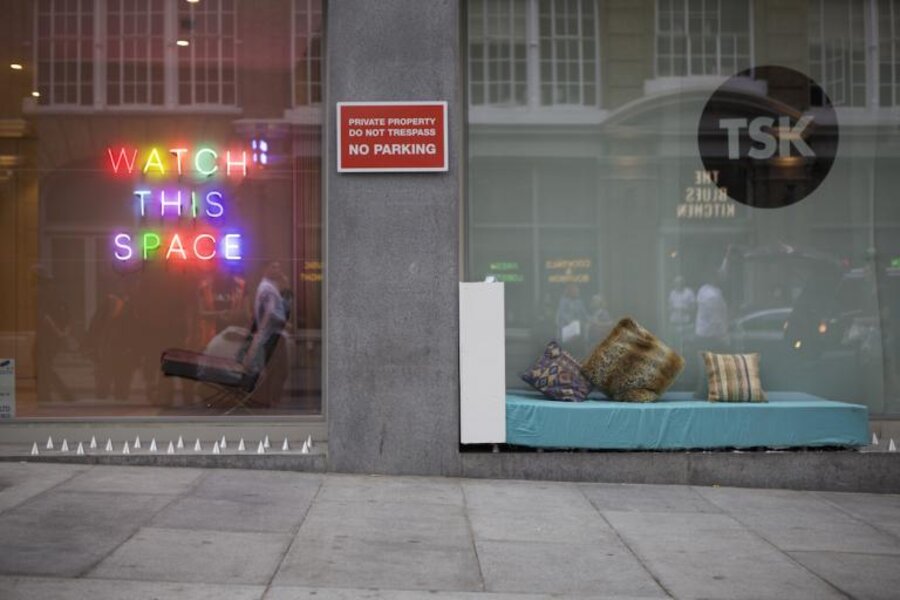Are 'anti-homeless' spikes heartless?
Loading...
Five hundred forty-three.
That’s how many people slept on the streets of London in autumn 2013, according to UK government statistics. And 15,500 people were estimated to be homeless or in temporary living circumstances in the city during 2012-2013. Recently, some London shops and businesses have taken drastic measures to prevent the local homeless from sleeping or lingering near their establishments: They have installed metal spikes outside their buildings.
The sharp objects rise a couple inches from the ground, baring silver teeth. The prongs are spread several inches apart from to prevent anyone from lying down, or even sitting.
But now, a group known as “Space, Not Spikes” has taken it upon themselves to do a bit of redecorating. The group has placed mattresses complete with sheets, pillows, and even books, in order to make the spikes more welcoming.
The group’s mission is to “[Turn] travesties of urban design into hospitable spaces,” according to the activists' website. The group was formed to protest the fairly recent use of spikes to deter the homeless in the European Union's most populous city.
Behind these spikes is a history of protest. Selfridges, a department store, in Manchester installed the shiny objects outside their storefront in December 2014. The company claimed at the time that they were, “part of a number of measures to reduce litter and smoking outside the store's team entrance," said a spokesperson for the high-end department store to the UK Telegraph. But the store agreed to remove the spikes a couple of months later, after an online petition gained over 10,000 signatures in a couple of weeks according to Greater Manchester News, a local Manchester paper. Tesco, a supermarket chain in London, installed spikes and then removed them in 2014, also in response to protests.
While the rate of homelessness in London has been rising since 2010, the number of people sleeping on the streets of England’s capital is much lower than in was in 2005. In 2013, The Economist reported that fewer people were sleeping on London's streets for multiple nights in a row, due to mayor Boris Johnson's “No Second Night Out” policy, which provides an emergency place to sleep and contacts friends, family, or services either domestically or abroad. However there is concern that this policy is driving the homelessness rate up in surrounding suburbs, which lack the capital and infrastructure to provide for out-of-town residents.
The high rate of homelessness in London can be attributed to a few factors, including rent and housing prices, and increasing landlord repossessions; additionally, only seven of London's 33 neighborhoods met their targets for affordable housing in 2013.
Leslie Morphy, chief executive of Crisis, a British charity for single homeless people, told The Guardian in 2014 that the solution to homelessness, "is not rocket science. We need to think longer-term, allocate resources more effectively, and pick up earlier on people in difficulty."
For now, these activists are trying to let the homeless sleep where they are able to find space. “Regardless of whether you own, rent or even have a home, the streets are ours," Space, Not Spikes says on their website.






